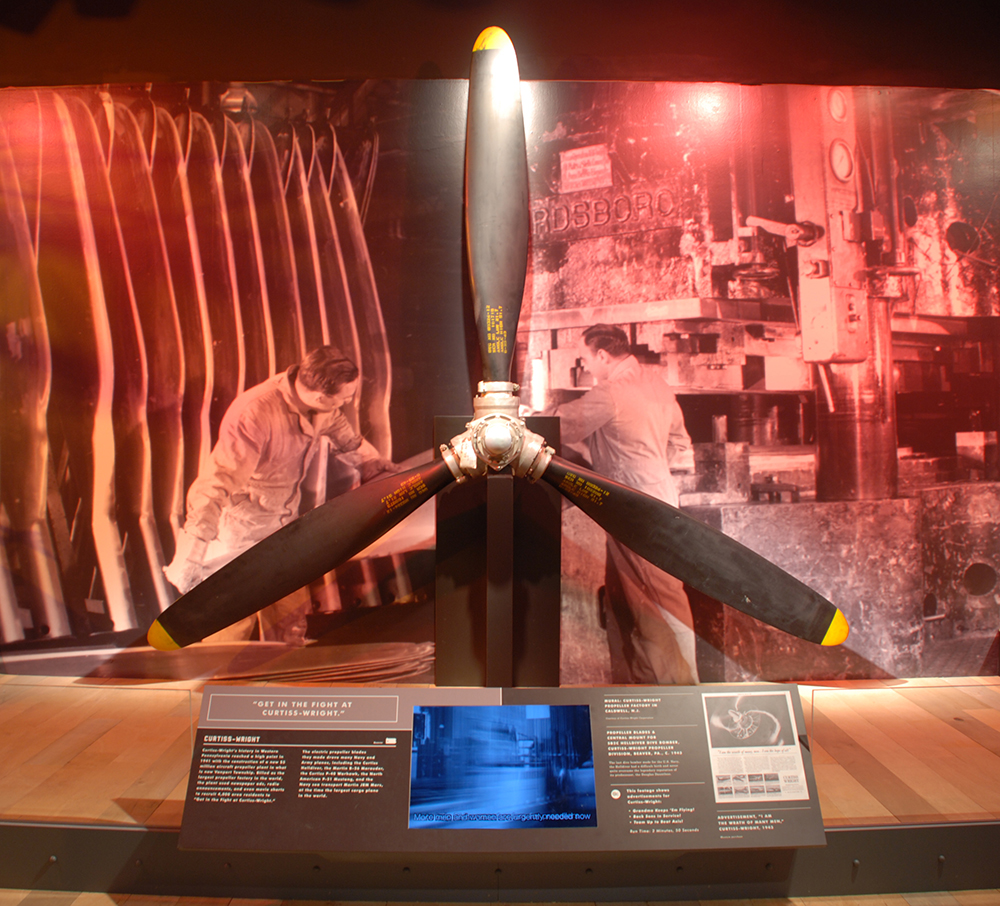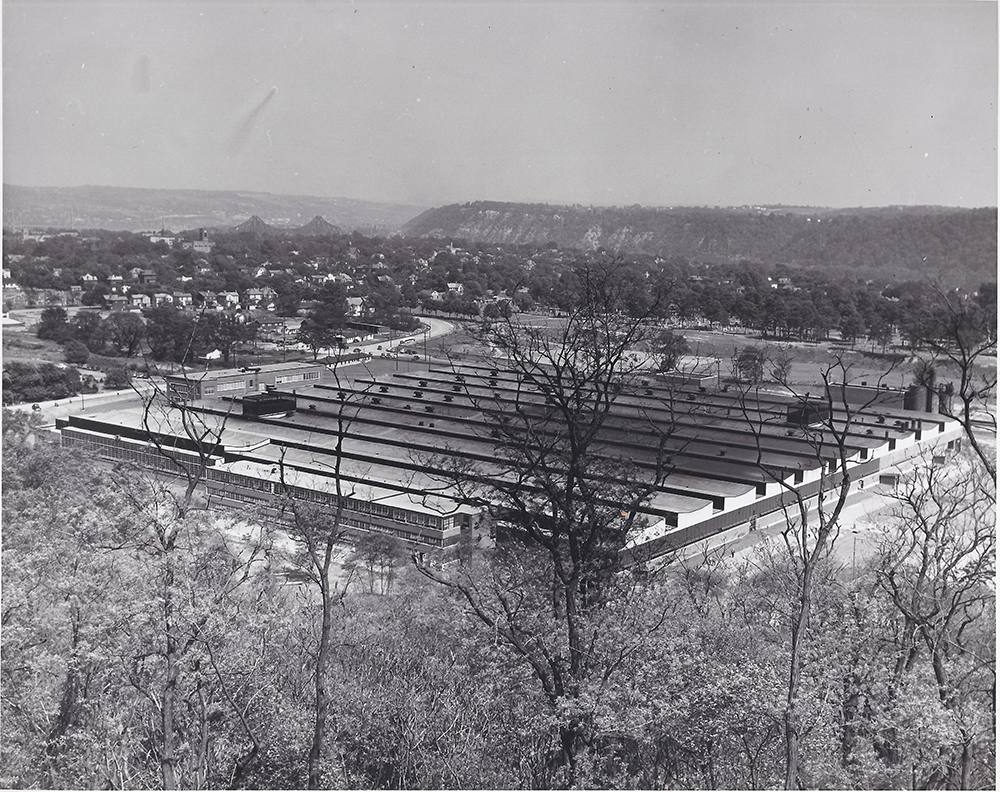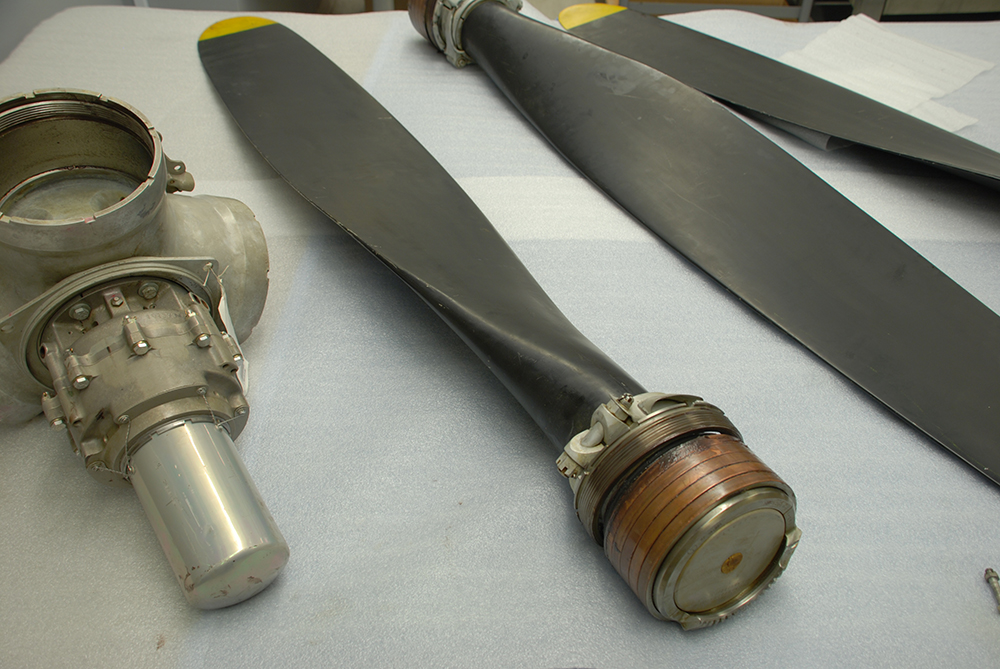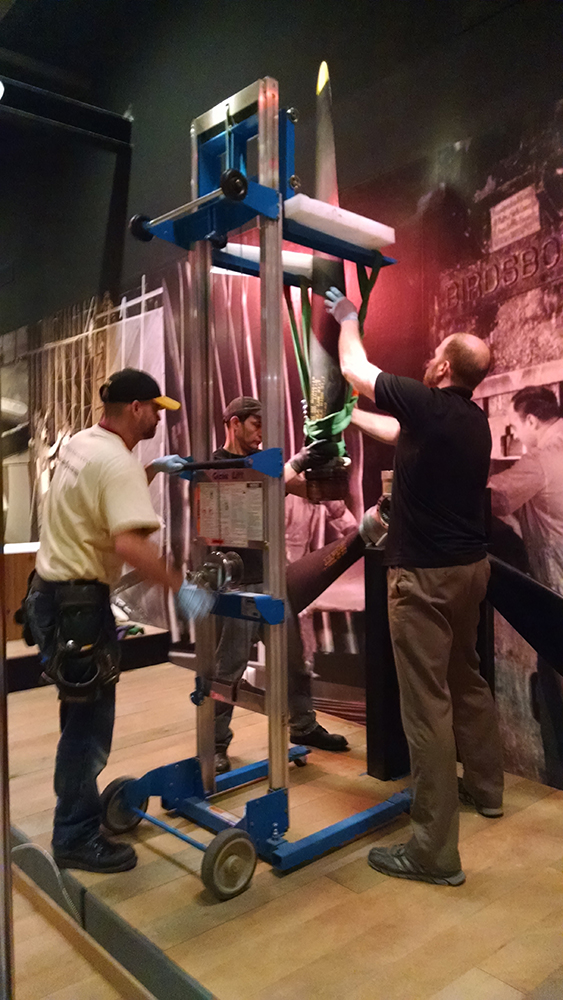
On display in the Hall of Industry section of the We Can Do It! WWII exhibition is a propeller on loan from the Smithsonian Institution’s National Air and Space Museum that was made locally by the Curtiss-Wright Corporation.
The company was part of a large national network that produced components for a variety of airplanes. As World War II intensified in 1940, Curtiss-Wright faced an increasing demand for manufacturing airplane parts, including propeller blades. Despite having multiple plants operating at full capacity with sites located in Indiana, New Jersey, and Pennsylvania, Curtiss-Wright could not keep up with the demand.

Beaver Area Heritage Museum, 2010.02.01b.
A search began for a location for a new plant and in February 1941, the War Department announced that a site had been chosen – a farm in Borough (now Vanport) Township near Beaver, Pa.[1] The new $5 million facility would be “the largest individual aircraft propeller manufacturing plant in the United States” according to the company’s president.[2] The factory brought thousands of new jobs to the area between 1942 and 1945, employing many men and women, especially as welders. These workers eventually fabricated more than 100,000 new propeller blades for a variety of aircraft each year. The propeller displayed in the We Can Do It! WWII exhibit is from a Curtiss Helldiver, a carrier-based dive bomber used in squadron raids against Japan.
When the propeller arrived at the History Center for the exhibit, the pieces were unassembled and our skilled exhibits team had the task of locking the blades into the central mount then securing the propeller on the support base and to the wall. The blades and central mount of the propeller are very precise and need to be completely level with each other in order to screw into place. This was no small feat to accomplish!
Once the bottom blades were attached, the central mount could be placed on the support base that we built to hold it. The final piece to be added was the top blade that had to be raised above the central mount with a lift, then lowered and screwed into place before it could be secured to the wall. Once assembled and secured in place, we could truly appreciate the skill and hard work that it must have taken for Curtiss-Wright workers to make these propellers and for technicians to assemble such impressive machinery at wartime.
[1] Some newspaper accounts at the time refer to the land selected as being in “Beaver Township,” probably a corruption of the township’s original name “Borough Township.” The official designation was changed to Vanport Township in 1970. The name shift was recorded by the “Beaver County Bicentennial Atlas” (1976), as accessed online, part of the Beaver County History Online project
[2] “Big Propeller Plant Will Be Built Near City,” Pittsburgh Post-Gazette, February 27, 1941.
Liz Simpson is the assistant editor for Western Pennsylvania History Magazine and assistant registrar with the museum division at the Heinz History Center.


